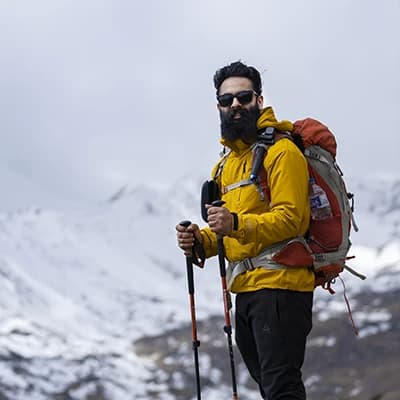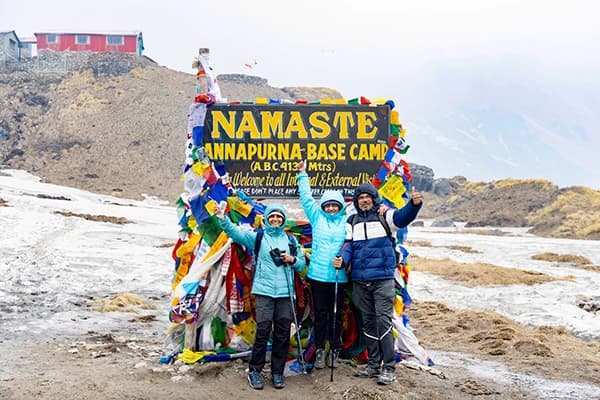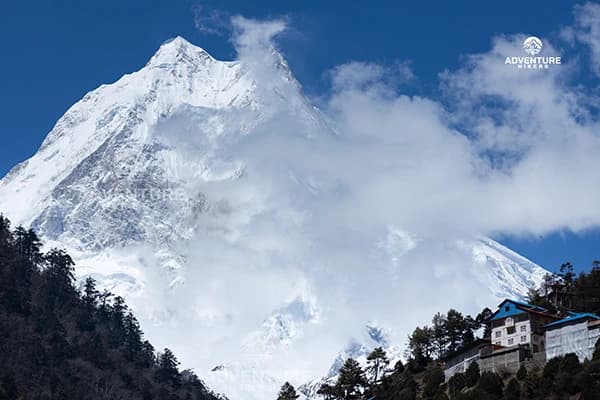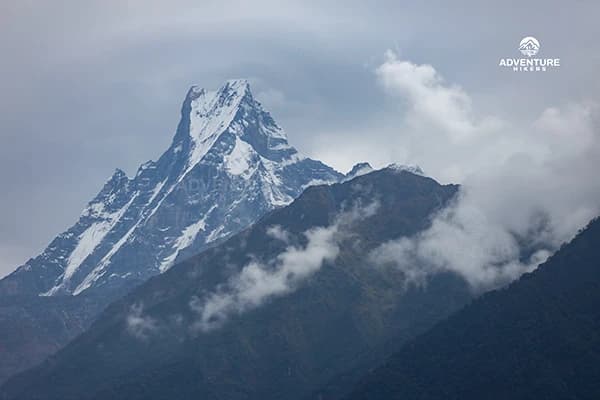The incredible land showcases its beauty throughout the year, there is no best time for trekking in Nepal and to explore the breathtaking landscapes and distinct culture of the country. Understanding the distinctive characteristics of the season enables trekkers to plan their journey accordingly, ensuring a safe and enjoyable experience while revealing the beauty of the Himalayas. However, the two main trekking seasons in Nepal are the Spring and the Autumn seasons. Here’s a guide to help you to choose the perfect time for your adventure journey in Nepal.
The Spring Season (March, April, and May)
Spring is the most famous and best trekking season in Nepal. Spring season falls during the month from March to April. It is the four temperate season succeeding winter and preceding summer. The Spring season is also known as the season of flowers season, offering the varieties of wildflowers including the magnificent views of rhododendrons along the trekking trails. Magnolia and Orchids are the most remarkable part of Spring Trekking in Nepal, and the picturesque rhododendron hills present a paradise look for trekking. Spring season in Nepal is also known as the rhododendron season.

The trekking trails are carpeted with colorful flowers and walking up and down through the fancy route enjoying the mesmerizing view of melting snow offers an extraordinary experience. Walking through the quaint forest and enjoying the melodious sound of birds chirping with a backdrop of giant snow-capped mountains, you will feel the most relaxing and best trip ever. Trekkers will also encounter the wild animals roaming around and the Himalayan langur jumping from tree to tree while walking through the dense forests.
Spring Hiking season means a comfortable hike at high altitudes, warm temperatures at lower altitudes, changing temperatures at higher altitudes, crystal clear blue skies, and amazing views of the mountains as well as nature, providing the most satisfying journey. During this season three trekking trails are quite busy as many travelers trekking to explore and experience the beauty of Spring. This season is also a festival season, as some local festivals fall during this time and people celebrate several festivals in the different corners of Nepal. Trekkers get a chance to savor the festive colors and explore the local culture, traditions, warm hospitality, local customs, and delicious foods which adds an extra spice and joy to their trekking experience.
The Autumn Season (September, October, and November)
Autumn is the peak and best season for trekking in Nepal. Autumn season falls during the month of September to November. It is the time when nature’s brushstroke upon a canvas of endless sky. The trees and vegetation start to change their color from green to orange or yellow, presenting different vibes and amazing scenery. You will also see certain flowers including the red Rhododendron still blooming in October on the trekking trails. You will see the formation of clouds in the afternoon the rain falls at lower altitudes and the beginning of snow falls at higher altitudes.
The weather becomes dry and best with a very comfortable temperature in September. The clear weather offers crystal clear views of giant mountains, beautiful landscapes, and nature with blue skies, and the climate remains stable, chilled, and vibrant. The temperature at high altitudes stays warm during the day and becomes freezing cold at night. The season brings so many changes in weather, the days become shorter and nights become longer slowly.
Autumn is the most popular and ideal trekking season, so the trekking trails are very busy at the time. Thousands of trekkers make their adventurous journeys to different destinations. The Everest Base Camp, Manaslu Trek, Langtang Valley, Annapurna Circuit and Annapurna Base Camp are the most popular Trekking. The Autumn seasons with the perfect weather, temperature, colorful vegetation, landscapes and clear and epic views of the snow-capped mountains, lakes, and glaciers offer the most splendid and remarkable trekking experiences in Nepal.

The Summer/Monsoon Season (Jun, Julu, and August)
The summer season starts from June to August. This travel season is considered as the off-season for trekking in Nepal, as with the start of the season it begins to rainfall. Nature and its beauty are in its most active and blissful phase. The crystalline tears of a waterfall cascading in grace, the rivers, natural vegetation, blue skies with white clouds, stars twinkling in velvet night, ballet of petals dancing in the wind, blooming meadows, forests breathing in harmony with the breeze, and a majestic tapestry of peaks, these wondrous sceneries embrace drape the nature in magic.
However nature presents the most satisfying beauty, there is a high risk to trek in the summer season. The temperature is extremely hot and the monsoon rain causes floods and landslides in most parts of Nepal. The trekking trails get muddy and slippery and the rain makes trekking difficult and risky. But people who can handle the hurdle of weather and enjoy the rain can do the trekkings in Summer also.
The Winter Season (December, January, and February)
The winter season in Nepal is another off-season for trekking. During winter the temperature falls extremely low and the trails are dry with very cold weather. The low elevation is in good condition for trekking but the higher elevation receives heavy snowfall. The trekking trails are completely covered with snow that makes trekking difficult. However, the whole trekking region turns into a winter wonderland. The incredible snow-capped mountains look more divine and mesmerizing. The frozen vegetation and landscapes look stunning. There is some short hiking destinations which is doable in every season sush as, Mardi Himal Hiking, Poon Hill Sunrise hiking etc, for those hikers who can tolerate the cold weather and love to walk on the snowy trails can do trekking at this time also.
In conclusion, Spring and Autumn hiking is considered as the best season to do treks in Nepal. The weather and temperature are comfortable and favorable at this time. The clear weather offers the most stunning views of mountains and landscapes. However, the Summer and Winter are off-season for trekking, those who can handle the changing weather conditions and difficulties on the trail can do the treks in these off-seasons also.







